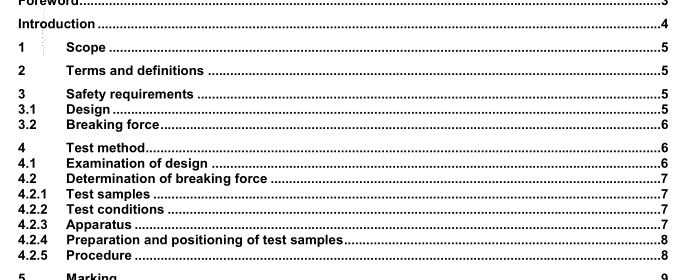EN 569:2007 – Mountaineering equipment — Pitons — Safety requirements and test methods

1 Scope
This European Standard specifies safety requirements and test methods for pitons for use in mountaineering including climbing.
2 Terms and definitions
For the purposes of this document, the following terms and definitions apply.
2.1
piton
device which, when inserted into a rock crack by means of a hammer or equivalent device, provides an anchor
NOTE Two parts can normally be identified in the piton: the head and the blade.
2.2
head
part of the piton which contains the attachment point eye (or eyes) used for connection to the rope (via a connector) and which is usually the part struck when inserting the piton
2.3
blade
part of the piton which is inserted into the rock crack
2.4
length of the piton
length of the blade measured in the direction of its insertion into the crack
2.5
pulling shackle
tool used to apply the force in the test
2.6
safety piton
piton which exhibits a high breaking force (see Table 1) and having a length of at least 90 mm
2.7
progression piton
piton with a lower breaking force than safety pitons (see Table 1)
3 Safety requirements
3.1 Design
3.1.1 The eye shall be at least 3 mm thick (see Figure 1).
3.1.2 The internal edges of the eye shall be rounded with a radius larger than 0,2 mm or larger than 0,2 mm × 45°. See a) in Figure 1.
3.1.3 When tested according to 4.1, the eye shall have an internal diameter of at least 15 mm. See b) in Figure 1.
3.1.4 If pitons are made from heat treated steel with a hardness greater than 38 HRC they have to appear dark. Pitons which are made from all other materials and a hardness less than 22 HRC have to appear light.
The head and the eye shall be free from burrs and sharp edges.
3.2 Breaking force
When tested in accordance with 4.2, the breaking force shall be not less than the appropriate value given in Table 1.
EN 569:2007 – Mountaineering equipment — Pitons — Safety requirements and test methods